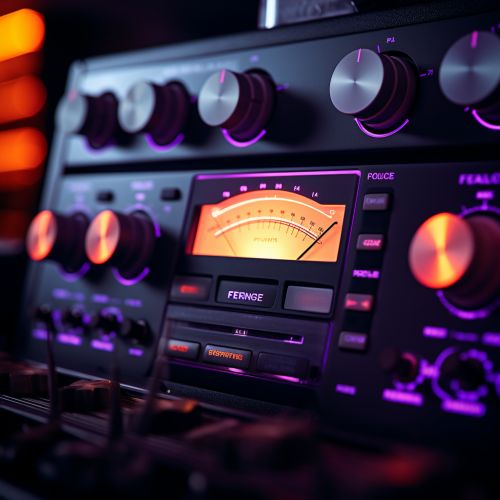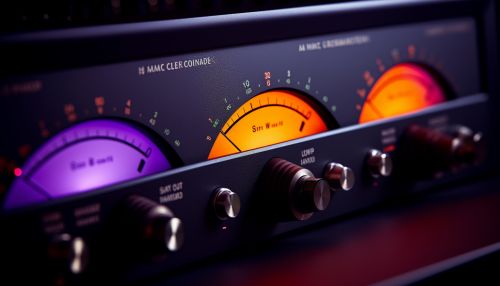Frequency
Introduction
Frequency, in the context of physics and engineering, is a measure of the number of occurrences of a repeating event per unit of time. It is quantified in the SI unit of Hertz (Hz), which is equivalent to one occurrence per second. The concept of frequency is central to various fields such as electromagnetism, acoustics, and signal processing, among others.


Fundamental Concepts
Time Period
The time period of a repeating event is the time taken for one complete cycle of the event to occur. The reciprocal of the time period is the frequency. For example, if an event occurs every second, its frequency is 1 Hz, and its time period is 1 second.
Wave Frequency
In the context of wave phenomena, frequency refers to the number of wave cycles that pass a fixed point per unit of time. It is a fundamental characteristic of a wave, along with its wavelength and speed.
Angular Frequency
Angular frequency, denoted by the Greek letter ω (omega), is a measure of frequency in terms of radians per second. It is related to the frequency (f) by the equation ω = 2πf.
Measurement of Frequency
Frequency can be measured using various methods, depending on the nature of the event or phenomenon under consideration. Some common methods include:
Oscilloscope
An oscilloscope is a type of electronic test instrument that allows observation of varying signal voltages, usually as a two-dimensional plot of one or more signals as a function of time.
Frequency Counter
A frequency counter is an electronic instrument that measures the frequency of an applied repetitive electronic signal and displays the result in hertz on a digital display.
Spectral Analysis
Spectral analysis or spectrum analysis is a method used in signal processing and physics to analyze the frequencies present in a signal or waveform.
Applications of Frequency
Frequency plays a crucial role in various applications, including:
Radio and Television Broadcasting
In radio and television broadcasting, different frequencies are used to transmit different channels. These frequencies are regulated by national telecommunications authorities.
Music
In music, frequency determines the pitch of a note. Higher frequencies correspond to higher pitched notes and vice versa.
Medicine
In medicine, frequency is used in various diagnostic and therapeutic techniques such as ultrasound imaging and electrocardiography.
